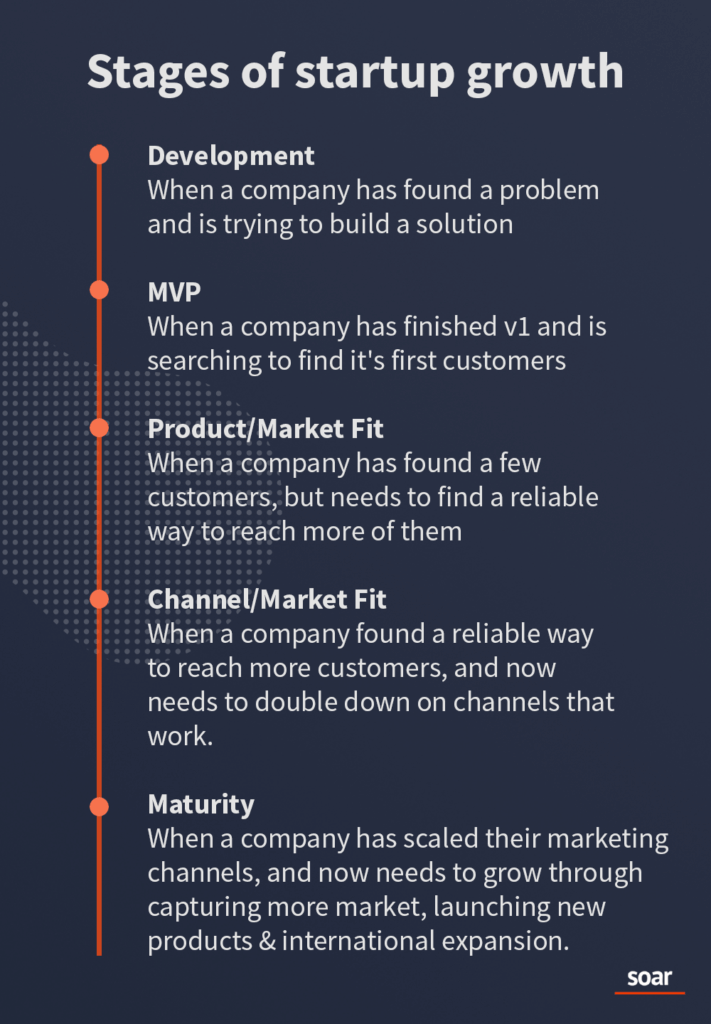Contents
If you’re building a startup. It’s important you understand where you are in your growth lifecycle and what you have to do next in order to grow.
Easier said than done, right?
As founders, the future feels completely uncertain. And overly rigid roadmaps are to be shunned.
However, there is a framework of thinking about startups that can help you understand what you should be focusing on.
5 stages of startup growth
[[Development]]– When a company has found a potential problem and is trying to create a solution
[[MVP]] – When a company has finished v1 and is searching to find it’s first customers
[[Product/Market Fit]] – When a company has found a few customers, but needs to find a reliable way to reach more of them
[[Channel/Market Fit]] – When a company has found a reliable way to reach more customers, and now needs to reinvest and double down on channels that work.
[[Maturity]] – When a company has scaled their marketing channels, and now needs to grow through capturing more market, launching new products & international expansion.

Know your competitors
The ability of a competitor to analyze the most successful companies within their specialized industries is invaluable and will provide invaluable insight. It will help you determine who your target market is by understanding what their needs are.
Are you looking for customers? Tell me the most efficient method to get people away from the competition. Often competitor analysis can bring you very valuable insights and get your business in front of your competitor.
The best thing about competitor analysis is that it supports your creativity, drive and lets you get inspired by things that already work.
Make sure you’re ready to convert
Now you can understand what attracts your target audience. A good way to advertise your business to a potential target demographic is by being able to identify what you are offering. Firstly, make sure the website you sell converts visitors into customers.
Second of all, send a clear message and don’t confuse your visitors by giving them too many options or spamming them with tons of annoying pop ups. These days, growth marketing has gotten very popular and covers the growth of your startup if done correctly, so check it out if you haven’t heard of it yet.
Growth strategies
Growth strategies, especially growth hacking can literally change your business in a very short period of time. Growth marketers / hackers can obtain a deep understanding of your customer acquisition cost, which growth channels to tackle, which growth hacks might be the most suitable for you and establish a successful growth strategy for your startup.
Startup growth can be very challenging obstacle to tackle and can be problematic even for growth teams. With the right business concept, planning and strategizing, your business will achieve a successful startup growth over a long term period of time.
Conclusion
Most startups are within these 5 stages of startup growth. However, it may be different for your startup. I recommend you to implement several growth strategies or even have your own internal growth team to scale up your small business.
At the beginning, it could be more expensive to have your own growth team, so rather outsource it to market professionals and focus on something you are good at. You will have to spend money either way if you want to grow and this way you will get the most out of it.
Learn more about startups program and how to grow your early stage startup all the way to the top. Leave it to the experts within the industry and start growing today. Schedule a call with our experts and leave the hustle to them.
Contents